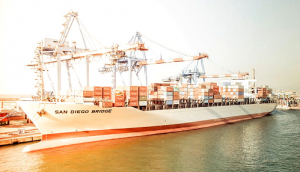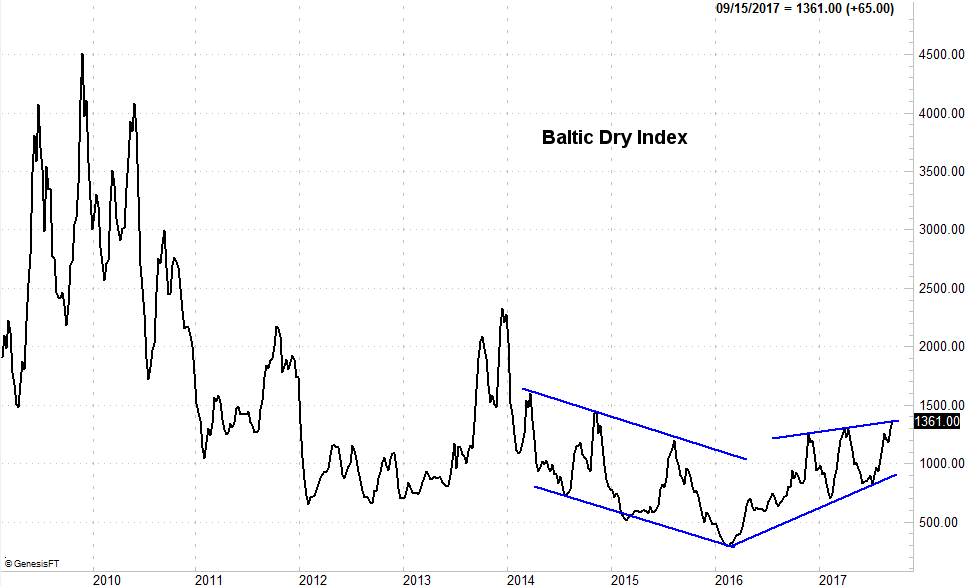Had it happened just a few years ago when these stocks were still in the limelight following a heroic runup between 2006 and 2007 — when oil prices soared — most traders would have been well aware of the reality. It's been so long since shipping stocks have offered hope, however, they fell off of investors' radars.
Big mistake. All too often, things start to change right after anybody bothers to notice. That looks like what's happened with shipping stocks and shipping rates of rates. Not only are the daily charter rates of cargo boats and tankers back to levels where these companies can actually afford to operate their vessels, those prices are still climbing.
Traders will take notice sooner or later… likely when a bunch of them start to dish out nice earnings surprises. But, as is always the case, it's better to know about brewing trends before they become obvious.
The premise here is ultimately about the Baltic Dry Index, or the measure of the average daily charter rate for a boat that ferries dry goods in giant vats within the ship's haul. These prices change from day to day, and in that they're negotiable, they're a reflection (more or less) of demand for shipping services.
They're also directly linked to how profitable or unprofitable shipping companies are; higher rates are better. That's why the recent runup from the Baltic Dry Index from 812 to 1337 is so exciting for the small group of faithful traders who've been waiting for this rebound. It's not just the BDI's advance from mid-July to now that makes this trade so interesting again, though. While it's ebbed and flowed several times in the meantime, the Baltic Dry Index was at 292 in early 2016, and has made a string of higher lows and higher highs from that point.
We're obviously still nowhere near the 2008 peak of 11,600. Indeed, we'll probably never get there again (at least not in this era). That was a time when traders truly thought the oil rally would never stop, and companies paid exorbitant prices to get crude from point A to point B without a second thought. Now they know better, but the massive number of boats built around that time is still keeping shipping prices tame.
Nevertheless, the advance of the Baltic Dry Index since the beginning of last year is a healthy, sustainable move, supported by — and this is the key — sustained strong prices in commodities besides oil. Aluminum prices are knocking on the door of their best levels since early 2013. Copper prices are at their best since late 2014, and still in an uptrend. Lumber prices are well into multi-year high territory, and getting more expensive. Though not all dry (or wet) commodities are racing higher, enough of the key ones are to suggest there's some structural/fundamental support for stronger shipping prices – if buyers are willing to pay for the goods, they're willing to pay to have them shipped.
Again, the bulk of this shift in the global economic undertow has gone unnoticed, and many of the few who have noticed haven't exactly gotten behind it by stepping into maritime shipping stocks. They may be too worried about a repeat of past fakeouts and disappointments. It's a trend at least worth putting on your radar, however, as there's multiple layers of evidence to suggest the world is slowly but surely using more commodities even if other data and the headlines suggest it shouldn't be. You'd be wise to put the possibility in your back pocket.

